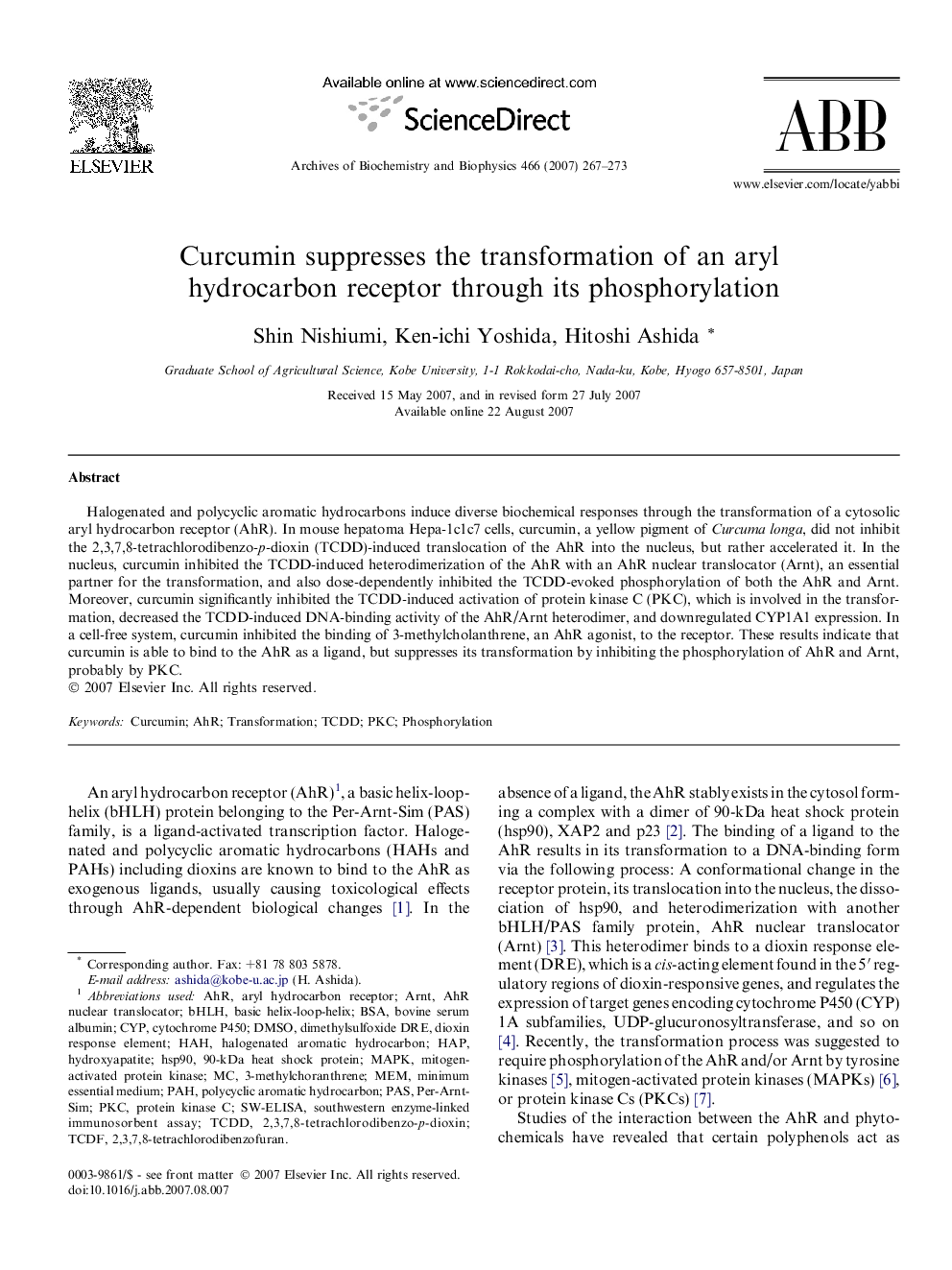| کد مقاله | کد نشریه | سال انتشار | مقاله انگلیسی | نسخه تمام متن |
|---|---|---|---|---|
| 1926966 | 1536493 | 2007 | 7 صفحه PDF | دانلود رایگان |

Halogenated and polycyclic aromatic hydrocarbons induce diverse biochemical responses through the transformation of a cytosolic aryl hydrocarbon receptor (AhR). In mouse hepatoma Hepa-1c1c7 cells, curcumin, a yellow pigment of Curcuma longa, did not inhibit the 2,3,7,8-tetrachlorodibenzo-p-dioxin (TCDD)-induced translocation of the AhR into the nucleus, but rather accelerated it. In the nucleus, curcumin inhibited the TCDD-induced heterodimerization of the AhR with an AhR nuclear translocator (Arnt), an essential partner for the transformation, and also dose-dependently inhibited the TCDD-evoked phosphorylation of both the AhR and Arnt. Moreover, curcumin significantly inhibited the TCDD-induced activation of protein kinase C (PKC), which is involved in the transformation, decreased the TCDD-induced DNA-binding activity of the AhR/Arnt heterodimer, and downregulated CYP1A1 expression. In a cell-free system, curcumin inhibited the binding of 3-methylcholanthrene, an AhR agonist, to the receptor. These results indicate that curcumin is able to bind to the AhR as a ligand, but suppresses its transformation by inhibiting the phosphorylation of AhR and Arnt, probably by PKC.
Journal: Archives of Biochemistry and Biophysics - Volume 466, Issue 2, 15 October 2007, Pages 267–273